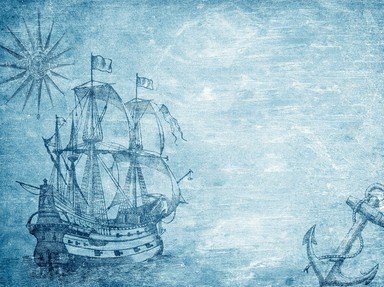Quiz Answer Key and Fun Facts
1. The British East India Company was formed in 1600, initially to trade with the East Indies and the Mughal Empire. It traded goods such as saltpetre, opium, spices, and indigo dye. Although it started off as a business, the company seized large amounts of territory during the decline of the Mughal Empire, and became a major political power in India. The company recruited its own private army of Indian soldiers, known as sepoys. After which battle in 1757 did the British forces, led by Sir Robert Clive, annex the territory of Bengal?
2. "If we are going to sin, we must sin quietly." To what was the attorney general of the British administration in Kenya, Eric Griffith-Jones, referring to when he said this?
3. During the second Boer War, the British set fire to Boer homesteads and imprisoned Boer civilians in concentration camps. In which country did this take place?
4. In 1950, during the Malayan Emergency, the British authorities in Malaya responded to a Communist insurgency with the Briggs Plan. What was the objective of the Briggs Plan?
5. On 13th April 1919, thousands of Indians gathered in the public garden of Jallianwala Bagh to protest against the arrest of two leaders of the Indian Independence Movement. British Indian Army troops responded by firing into the crowd, killing between 379 and 1000 protestors. In which city in the northwest of India did this occur?
6. Between 1956 and 1959, conflict arose between the nationalist group EOKA and the British Empire in a country that was formerly part of the Ottoman Empire. The British authorities rounded up and tortured around 3,000 citizens suspected of being EOKA members. In which country did this occur?
7. The 2003 invasion of Iraq was not the first time the British had invaded the region; they had previously put down an uprising in the 1920s, using heavy bombing raids. Although poison and tear gas was not used to quell the insurgency, one senior British politician supported their use against 'recalcitrant Arabs', saying, "I am strongly in favour of using poisoned gas against uncivilised tribes [to] spread a lively terror". Who was he?
8. The civil servant Sir Charles Trevelyan said, "The real evil with which we have to contend is not the physical evil of the Famine, but the moral evil of the selfish, perverse and turbulent character of the people." To which famine was he referring when he said this?
9. In 1947, the British Parliament passed the Indian Independence Act, dividing British India and creating the new Muslim state of Pakistan. What was the name of this event?
10. During the age of new imperialism, several European factions - the British Empire among them - divided most of Africa amongst themselves, in what is known as the Scramble for Africa. Which of these countries was NOT a colony of the British Empire?
Source: Author
Kankurette
This quiz was reviewed by FunTrivia editor
bloomsby before going online.
Any errors found in FunTrivia content are routinely corrected through our feedback system.
